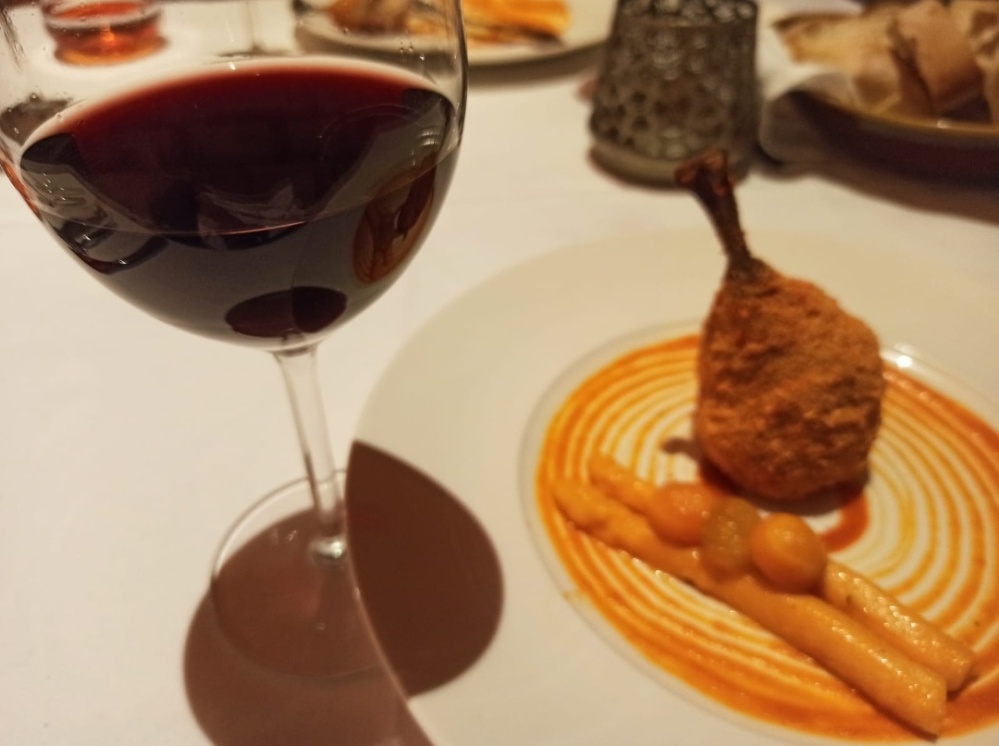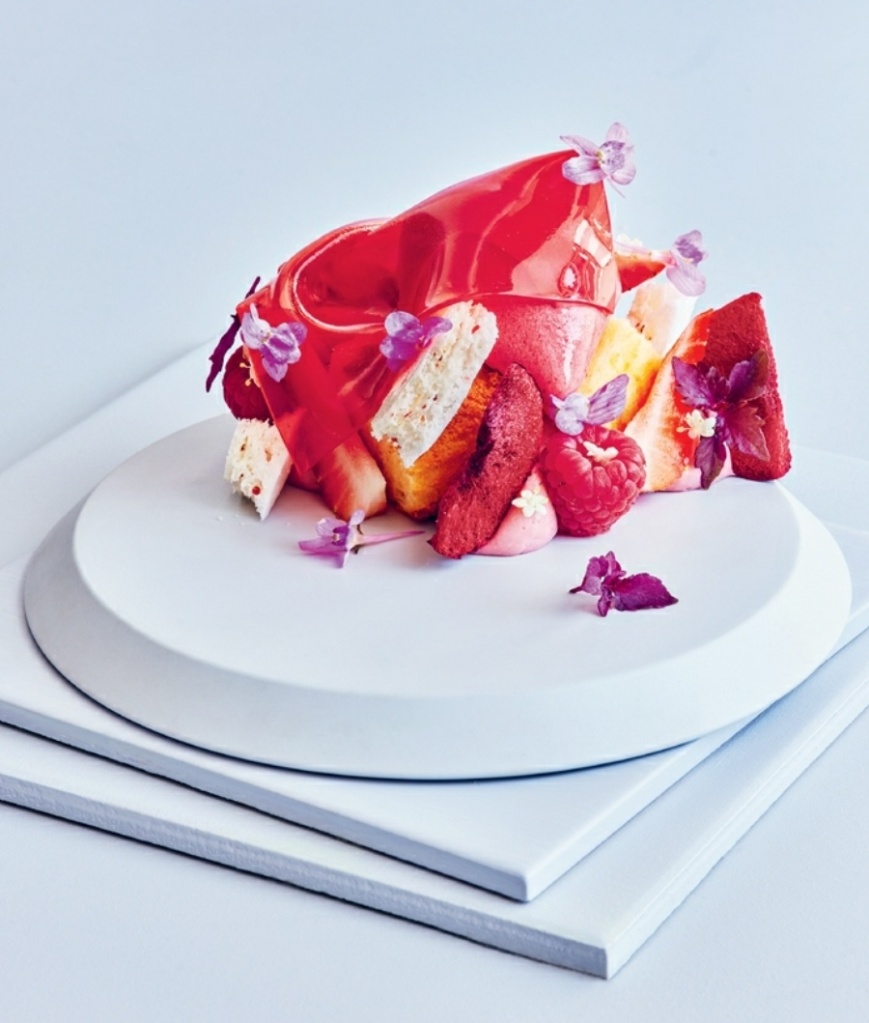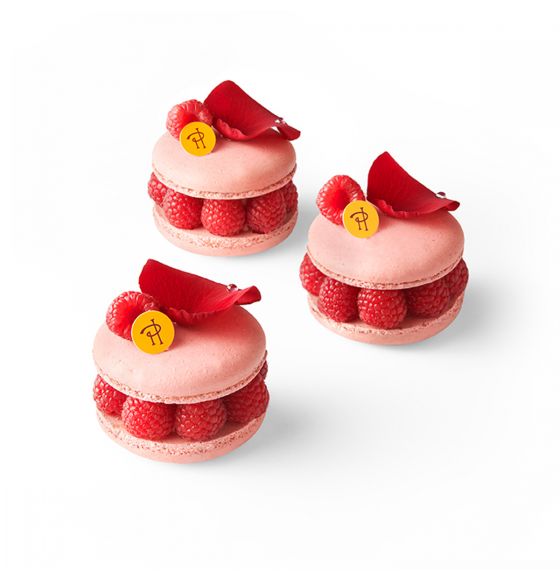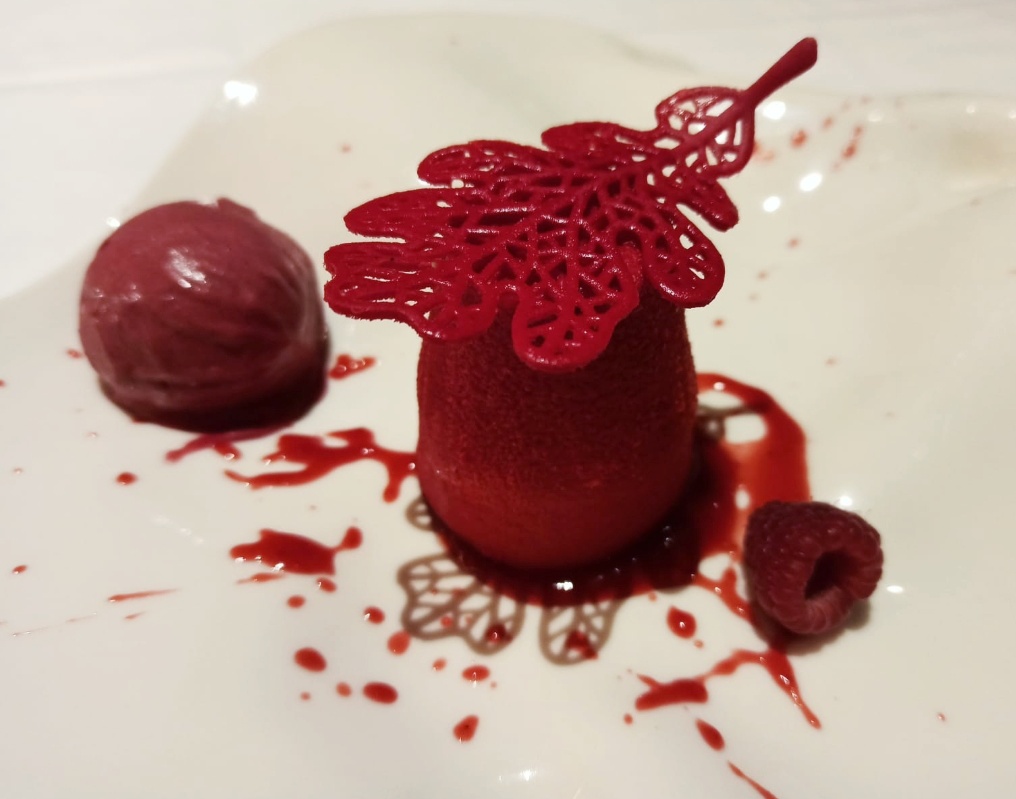As a concept, monochrome food seems counterintuitive: isn’t food meant to be colourful and eye-catching? From the green coriander on an orange butter chicken to the white sesame seeds on a brownish prawn stir-fry, contrast in food is eye-catching, and something which we have associated with being appetizing. Monochrome dishes look duller, since everything on the plate employs shades of the same base colour.
Monochrome is in fact, a form of minimalism, not of portion size, but of colour. It has the same visual appeal as a pencil drawing, which through its myriad shades of gray, can convey an entire story. Of course, monochrome has become an integral part of my life now, since sifting through shades of gray for patterns and answers is the mainstay of radiodiagnosis. Monochrome dishes fall right at the intersection of the food-radiology Venn diagrams, which is why I take particular interest in it.

I had briefly talked about monochrome food in an article on colours, about two years ago. The concept has always fascinated me, and just this month, it got some added impetus due to two recent monochrome experiences; one active, the other passive. Over this week and the next, we will slowly pry open the realm of monochrome food, discussing its pros and cons, its potential and pitfalls.
So, what made me write a two-parter on monochrome? The first reason is a book that was released earlier this month, a book I have been looking forward to for months now. The Dessert Game is the first cookbook of pastry chef Reynold Poernomo, whose culinary career has had an upward trajectory right from his first appearance in season 7 of Masterchef Australia upto the present day, with his dessert bar KOI attaining worldwide fame. The book features a lot of amazing desserts ranging from simple to complex, and monochrome desserts form a big part of it.

While I will be referring to Reynold’s desserts, they will be mere references in passing, since I haven’t tasted any of them personally. Our discourse will be mainly centered around a unique and amazing meal I had just last week in Ottimo at ITC Kohenur, Hyderabad. They hosted a special wine dinner featuring a monochrome menu. We will sidestep the discussion on food-wine pairing for later, and focus on the monochrome aspect of the menu.
The meal comprised seven courses which we will tackle one by one, but not in order. Since we will approach the dishes haphazardly, let me mention the dishes in sequence at the outset. The meal began with an amuse bouche, a “one-bite wonder” to kick start the meal. This was followed by a soup and then a pasta. The fish course came next, followed by a palate-cleansing sorbet. This was followed by the main course, which was a chicken dish, and finally, dessert.

Common sense dictates that the simpler a dish is, the easier it is to make monochrome. A green sarson da saag or a white rosogolla could be considered a “monochrome dish”. However, the term usually refers to plated dishes with multiple components. We’ll get to those in a while but before that, it is worthwhile to consider some of the simpler dishes in a multi-course menu that would fit easily into the monochrome label. Course five, the sorbet, is an ideal example.
A vibrant red raspberry sorbet or a light green lime sorbet definitely fits the monochrome brief, especially with a garnish of fresh raspberry or candied lime peel respectively. However, this would be the ideal opportunity to bring in certain colours which would be very difficult to work into in a multi-component dish. And one of the most difficult colours to bring into the culinary palate is blue.
Why? Because very few foods are naturally blue. Even the blueberry has a skin that is more deep purple than blue, and on cooking it turns a vibrant shade of purple halfway between blue and red. To bring blue into the party, we need to think of some other colouring agent; not artificial, because that feels like cheating, but natural. And there is one natural ingredient that is “blue”-blue : the blue pea flower or aparajita phool, often brewed into a light herbal tea with a pale blue colour.

The tea itself is pretty light, so flavour reinforcements are necessary. However, the pigment in the flower is extremely pH sensitive, and generous squeezes of lime would turn it red, like litmus. So flaovurings need to be chosen judiciously. Ginger and lime peel could be used to infuse it with a strong gingery hit and a subtle background note of citrus. This flavourful elixir is then churned into a light blue sorbet with some dried blueberries, which add blotches of deep blue against the lighter sky-coloured background.
While the blue sorbet is an ingenious way of bringing one of the most apparently unappetizing colours into the meal, some might consider it cheating, since the flower does nothing more than add colour; the flavour comes from elsewhere. For an ingredient which acts as both colouring and flavouring agent, we need to turn to the first course of the meal, an amuse bouche described as “Java Plum Candy” with a filling of walnut and cream cheese, garnished with freeze-dried raspberry.

The hero of this dish is the Java plum or jamun, an ingredient with a vibrant purple colour and a characteristic sweet astringency reminiscent of red wine. The juice is made into a fruit leather, aam papad style, and used as an edible wrapper for the actual “candy”, a filling made of cream cheese and walnut. The tang of the raspberry adds a fresh zing to the dish, making it a delicious mouthful. Bouche successfully amused.
The clever thing about this dish is the way the cream cheese filling is hidden inside the plum leather. And since it is an amuse bouche, meant to be had in one go, no one would find out about the white impostor sneaking into this celebration of purple. The plum candy wrapper is remarkable similar to the centerpiece component of Reynold’s Red Veil dessert, although the application is entirely different. While Reynold’s veil beautifies, the candy wrapper deceives, in a cheeky, playful way.

Of course, the impostor needn’t always hide, since the sudden appearance of an unexpected colour in a monochrome dish creates the same effect as a sepia Dorothy opening the door to the colourful land of Oz. And that is precisely what Reynold does in his signature Moss, with a golden dulce cremeaux center hiding amongst the greenery, and again in White Noise, a dish that gained popularity after the high praise it received from Gordon Ramsay in the opening episode of Season 12 of Masterchef Australia.
A dish of pristine white gets tainted with a splash of red as the diner cuts into a white chocolate “pebble”, revealing a bright red strawberry core. The element of surprise is a big element to restaurant dining, and it is aesthetic amusement at its best. However, there is a catch. The version in Reynold’s cookbook is a lot less white than the Masterchef version. And Reynold explains why in the cookbook, under the recipe subsection of white chocolate dip: “Because cocoa butter naturally has a yellow tinge, I add titanium dioxide, an edible white pigment, to create a much purer finish to the chocolate dip”.

And this is probably why the monochrome menu didn’t rip off White Noise for dessert, although it didn’t end up having any white dish and used a very similar hue to the dessert. The entire menu was crafted from naturally coloured foods without resorting to artificial pigments. For dessert, it went for a vibrant shade of red, slightly similar to the amuse bouche, and yet very different. The dessert is red, alarmingly red, yet it is all natural. An entremet, a scoop of gelato, a fresh raspberry, and an ornate red tuile biscuit.
The colours play off each other, and the splashes of berry coulis give the dish a look that is a cross between a Jackson Pollock painting and a murder scene (in a good way). The inspiration for the dessert was the classic raspberry-litchi-rose trio, the brainchild of French patissiere extraordinaire Pierre Hermé, whose legendary Ispahan macaron, named after a variety of Middle Eastern Damask rose, features this flavour combo. The colour palate ranges from the bright red of the raspberry to the white of the litchi, travelling through shades of pink in between.

In this dessert, the litchi element is hidden within a bright red casing of cocoa butter. Breaking it open revealed decadent layered gateau made with a beetroot financier base, ruby chocolate mousse, bits of litchi with a hint of rose, and a berry jelly. While the colour scheme screamed Ispahan, the rose was too subtle, and the beetroot added an earthiness you wouldn’t get in Pierre’s macaron.
But the beetroot really took this dish to the next level. It added an earthiness to the dish which really helped balance out the sweetness, reining in the tang and rounding out the dessert, making it feel incredibly moreish. Just like the jamun and raspberry in course one, it is an interplay of two ingredients with similar colour but very different flavours. The two red courses, united by the common element of raspberry, one of my favourite flavours, bookended the meal really well.
So far, we’ve covered the sweeter courses of the meal. Next time, we will deal with the more savoury courses, while further exploring the concept of monochrome food.

One Comment Add yours